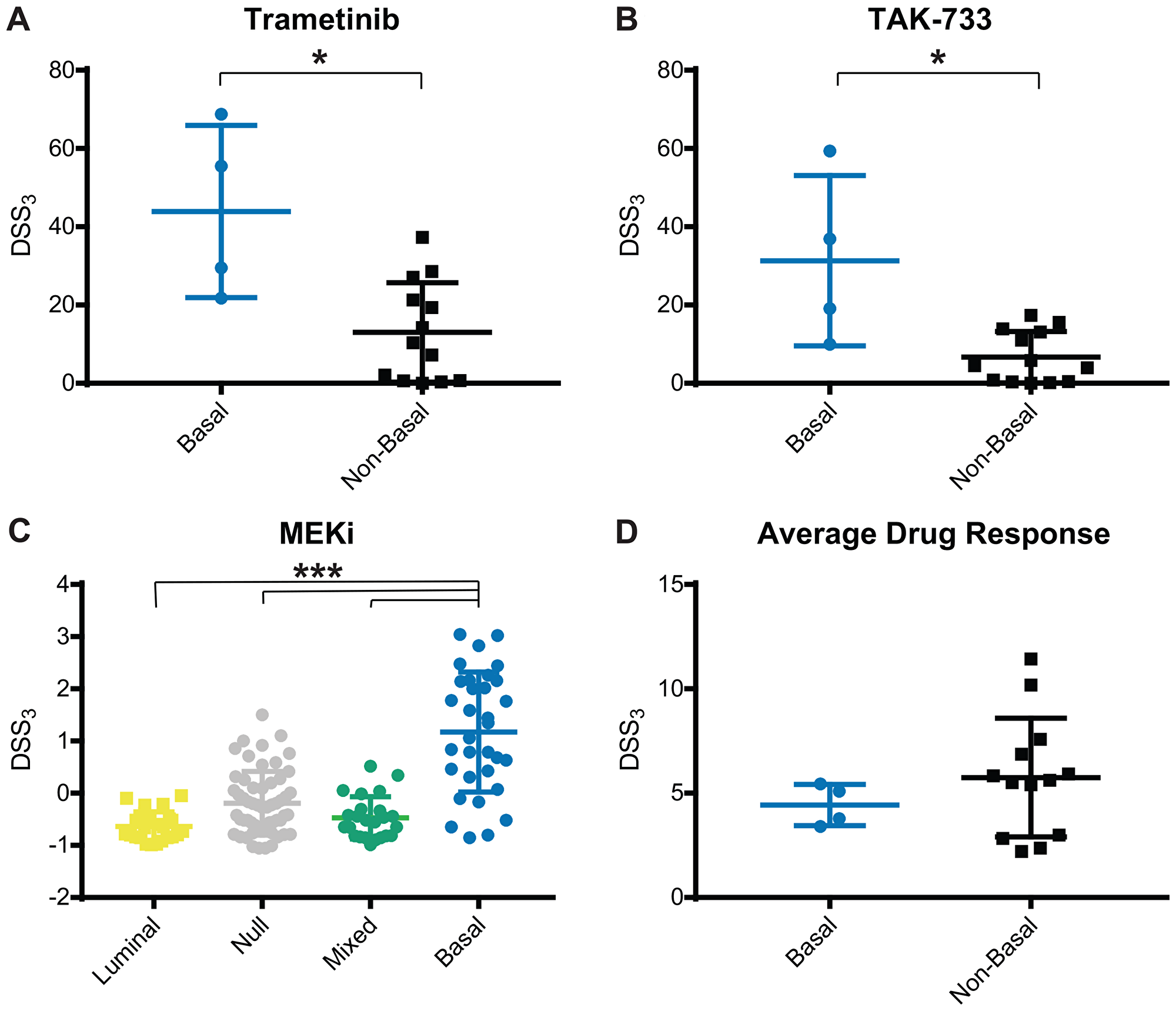Oncotarget recently published in "MEK is a promising target in the basal subtype of bladder cancer" by Merrill, et al. which reported that while many resources exist for the drug screening of bladder cancer cell lines in 2D culture, it is widely recognized that screening in 3D culture is more representative of in vivo response.
To address the need for 3D drug screening of bladder cancer cell lines, the authors screened 17 bladder cancer cell lines using a library of 652 investigational small-molecules and 3 clinically relevant drug combinations in 3D cell culture.
Their goal was to identify compounds and classes of compounds with efficacy in bladder cancer.
Utilizing established genomic and transcriptomic data for these bladder cancer cell lines, they correlated the genomic molecular parameters with drug response, to identify potentially novel groups of tumors that are vulnerable to specific drugs or classes of drugs.
Importantly, the Oncotarget authors demonstrate that MEK inhibitors are a promising targeted therapy for the basal subtype of bladder cancer, and their data indicate that drug screening of 3D cultures provides an important resource for hypothesis generation.
"The Oncotarget authors demonstrate that MEK inhibitors are a promising targeted therapy for the basal subtype of bladder cancer, and their data indicate that drug screening of 3D cultures provides an important resource for hypothesis generation"
Dr. Matthew B. Soellner and Dr. Sofia D. Merajver from The University of Michigan said, "Bladder cancer is the most frequent cancer of the urinary system in the United States with nearly 82,000 new cases each year and 18,000 deaths, affecting men more often, in a 3:1 ratio."
Bladder cancer can be divided broadly into non-muscle-invasive bladder cancer and muscle-invasive bladder cancer.
The Genomics of Drug Sensitivity in Cancer represents one of the largest efforts in total drugs, screening 19 bladder cancer cell lines against 518 drugs.
Indeed, screening in 3D using ultra-low attachment plates is ideal for bladder cancer cell culture, and this method has been utilized in seminal studies for screening patient-derived organoids to predict patient response to drug treatments.

Figure 4: MEK inhibitor response correlates with basal subtype. Average and standard deviation for DSS3 response to (A) Trametinib, (B) TAK-733, (C) Normalized MEK inhibitors, and (D) Average drug response, grouped by cell line subtype. Each point represents an individual cell line. Center line is average and brackets are standard deviation. Significance determined using Mann-Whitney test, *p < 0.05, or Kruskal-Wallis with Dunn test for multiple comparisons, ***p < 0.001.
Therefore, there is a utility in screening bladder cancer cell lines in large drug screens in 3D cultures to identify novel therapeutic options for future testing in PDOs and, ultimately, patients.
Then, utilizing established genomic and transcriptomic data for these bladder cancer cell lines, including prioritized mutations, copy number variants, and RNA-based molecular subtyping, they correlated these molecular parameters with drug response identifying potentially novel groups of tumors that are vulnerable to specific drugs or classes of drugs.
The Soellner/Merajver Research Team concluded in their Oncotarget Research Paper, "this work is a valuable resource for the identification of experimental therapeutics in bladder cancer, having screened 652 investigational therapeutics and 3 drug combinations in 17 bladder cancer cell lines, using a 3D cell culture format. As next steps, we pose that this work be used to further test additional therapeutic options for patients with bladder cancer. Moreover, this work highlights a need for biomarkers of drug response, beyond mutational data. Lastly, using these methods, we identify MEK inhibitors as a promising therapeutic in the basal bladder cancer subtype. Important future work will investigate the specific molecular features of the basal subtype that make these cells more sensitive to MEK inhibition, and if this MEK sensitivity signature is applicable to other cancer subtypes."
Sign up for free Altmetric alerts about this article
DOI - https://doi.org/10.18632/oncotarget.27767
Full text - https://www.oncotarget.com/article/27767/text/
Correspondence to - Matthew B. Soellner - [email protected] and Sofia D. Merajver - [email protected]
Keywords - bladder cancer, drug screen, 3D culture, basal bladder cancer, MEK inhibition
About Oncotarget
Oncotarget is a biweekly, peer-reviewed, open access biomedical journal covering research on all aspects of oncology.
To learn more about Oncotarget, please visit https://www.oncotarget.com or connect with:
SoundCloud - https://soundcloud.com/oncotarget
Facebook - https://www.facebook.com/Oncotarget/
Twitter - https://twitter.com/oncotarget
LinkedIn - https://www.linkedin.com/company/oncotarget
Pinterest - https://www.pinterest.com/oncotarget/
Reddit - https://www.reddit.com/user/Oncotarget/
Oncotarget is published by Impact Journals, LLC please visit http://www.ImpactJournals.com or connect with @ImpactJrnls
Media Contact
[email protected]
18009220957x105





